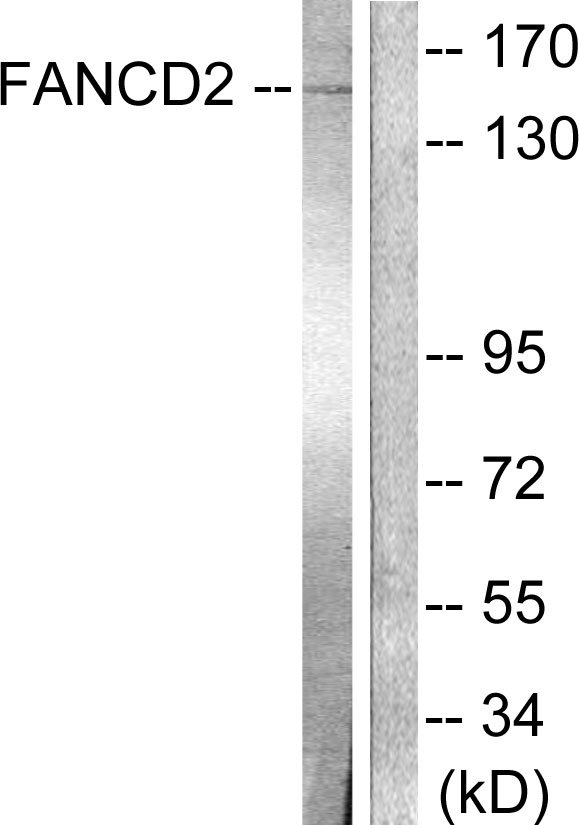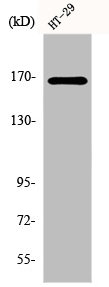
Immunohistochemical analysis of paraffin-embedded human spleen, using FANCD2 Antibody.
Anti-FANCD2 Rabbit Monoclonal Antibody
M00563
ApplicationsImmunoFluorescence, ImmunoPrecipitation, Western Blot, ImmunoCytoChemistry, ImmunoHistoChemistry
Product group Antibodies
ReactivityHuman, Mouse, Rat
TargetFANCD2
Overview
- SupplierBoster Bio
- Product NameAnti-FANCD2 Rabbit Monoclonal Antibody
- Delivery Days Customer9
- ApplicationsImmunoFluorescence, ImmunoPrecipitation, Western Blot, ImmunoCytoChemistry, ImmunoHistoChemistry
- CertificationResearch Use Only
- ClonalityMonoclonal
- Clone IDGCE-6
- Gene ID2177
- Target nameFANCD2
- Target descriptionFA complementation group D2
- Target synonymsFA-D2, FA4, FACD, FAD, FAD2, FANCD, Fanconi anemia group D2 protein, Fanconi anemia complementation group D2
- HostRabbit
- IsotypeIgG
- Protein IDQ9BXW9
- Protein NameFanconi anemia group D2 protein
- Scientific DescriptionBoster Bio Anti-FANCD2 Rabbit Monoclonal Antibody catalog # M00563. Tested in WB, IHC, ICC/IF, IP applications. This antibody reacts with Human, Mouse, Rat.
- ReactivityHuman, Mouse, Rat
- Storage Instruction-20°C
- UNSPSC12352203
References
- Xiong M, Zhou S, Feng S, et al. UHRF1 is indispensable for meiotic sex chromosome inactivation and interacts with the DNA damage response pathway in mice†. Biol Reprod. 2022,107(1):168-182. doi: 10.1093/biolre/ioac054Read this paper
- Xu D, Liang D, Guo Y, et al. Endosulfan causes the alterations of DNA damage response through ATM-p53 signaling pathway in human leukemia cells. Environ Pollut. 2018,238:1048-1055. doi: 10.1016/j.envpol.2018.03.044Read this paper






